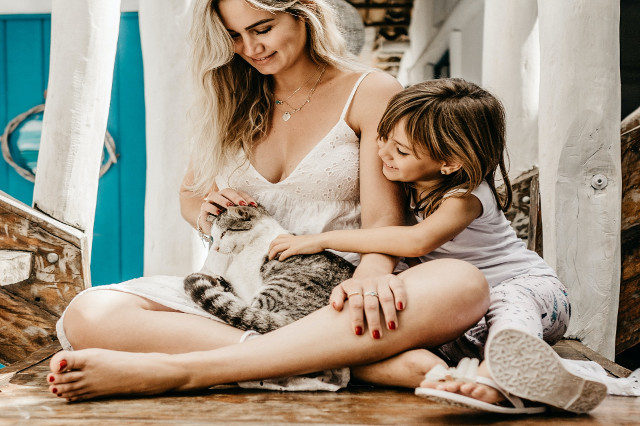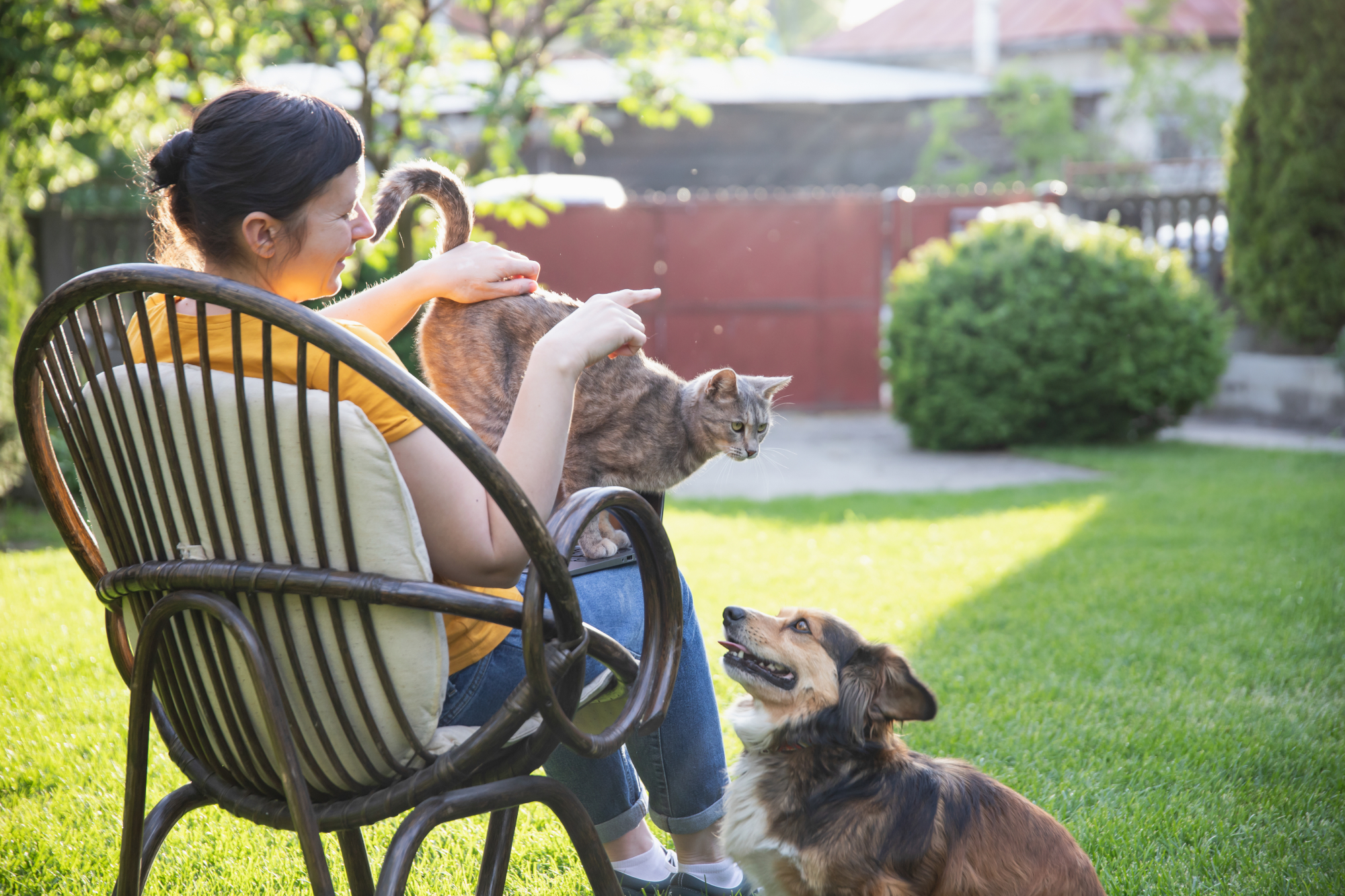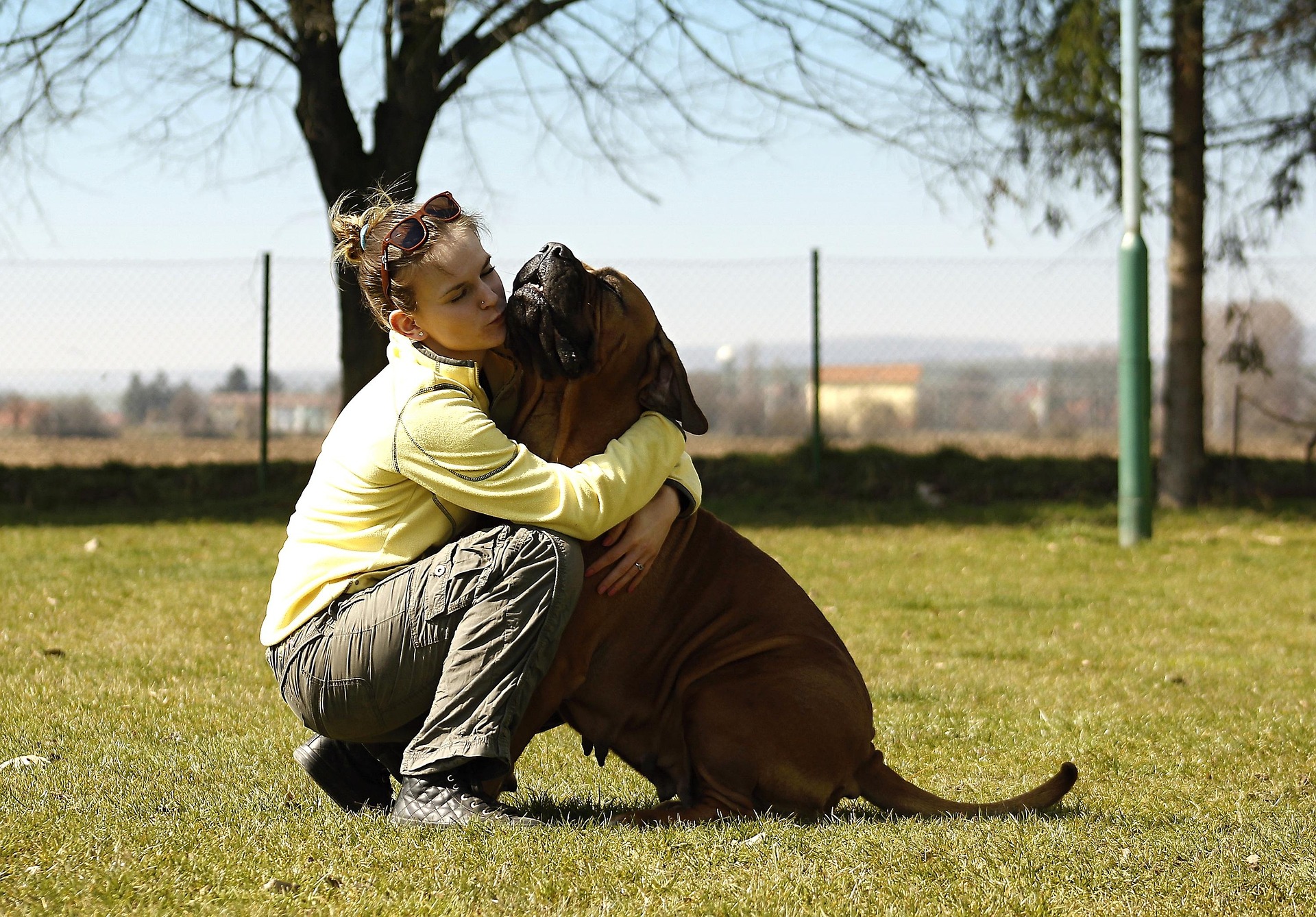Having a furry companion in the family can be a real joy, and there have been multiple studies showing the benefit that having pets at home can have on a developing child. However, if you’re looking to introduce your child to a new pet, or a new child to your pet, you’ll need to put the work in to make sure both are as happy and comfortable as possible.
It’s important to teach your child to respect all animals, not just pets, from an early age. However, since cats, dogs, and rabbits are the animals they’ll most likely come into contact with, they can be the perfect starting place to teach your child the importance of respect and gentleness for all living things.
Teaching your child to be gentle with animals will not only provide a safe and peaceful environment for you and your pets, but it could help prevent any potentially nasty interactions, such as dog bites, with unknown animals down the line. No matter how well-behaved the kid, as their parent, you should always keep an eye on them when they’re around animals, particularly in the transition phase as they get used to having a pet in the house. Even the gentlest child can hurt, annoy, or aggravate an animal without meaning to, thanks to their limited motor skills and still-developing sense of boundaries.
While each family has their own specific way of teaching important lessons to children, we believe the best way to make a lasting impression is to lead by example. Young children, with their ever-expanding minds, are constantly absorbing information from the world around them, most of all from their parents. Understanding what kinds of behaviours you’d like to see from your child, and then modelling those behaviours, is the number one way to start seeing positive change from your child’s animal encounters.
Encouraging desired behaviours
Although the exact list of ideal behaviour may shift a bit depending on your family and your pet, there are a few basic ground rules that will help provide stability and happiness for everyone involved. This includes, but isn’t limited to:
- Overall respect and gentleness when interacting with animals
- Calm play, and avoiding over-exciting the animal
- No abusive behaviour, such as hitting, prodding, yelling, etc.
- Leaving animals, particularly dogs, alone when they’re in their crate unless absolutely necessary
- Leaving animals, especially dogs, alone while they’re eating
- Understanding how to pet animals, and doing it calmly
- Not chasing after animals that want to be left alone
- When meeting a new dog, never approaching it straight away; instead letting it come to you
Although your child should know each of these, rattling each one off at the same time is unlikely to stick in their brain. When in doubt, think of the old mantra “show, don’t tell.” Kids learn by watching, and by doing, and this is equally true when learning how to respect animals.
Teaching your child proper behaviour
So what’s the best way to model proper behaviour around animals? We recommend working backwards from the behaviour you’d like to see, and figuring out how you can create teachable moments to leave a lasting impression. For instance, show your child how your pet likes to be touched. Do it with them first, in order to give an example. When they’ve observed the proper technique, allow your child to give it a try. Work with them until they’re able to properly pet the animal without corrections or reminders, and be sure to emphasize how much your pet likes it when they’re touched properly.
Children, and especially toddlers, must learn to allow dogs to approach them first, rather than vice versa. They should understand that while many animals look cute and cuddly, they may not be comfortable around new people, or may only like to be touched in a certain way. If you and your kid are out and about, and you spot a friendly looking dog, make a point of letting your child see you ask for the owner’s permission to pet it. Then, invite the dog to come to you, and have your child do the same thing.
For your own pet, reinforce that your child should do something else while your pet is in their crate, eating, or doing their business. If they don’t understand straight away, try drawing comparisons. How would your child feel if someone tried to scratch them behind the ears while they were busy with sleeping or eating? Make sure they understand that, just like people, animals need private time away from others.
Above all else, make sure your child understands that your pet is a living being with emotions, and a personality, not a toy. While a young child may not fully understand the difference between their cat and their favourite stuffed animal yet, it’s important to reinforce the distinction as often as possible. Again, drawing comparisons to how they’re expected to behave around people can be useful—for instance, just as with people, your child should understand never to throw things at your pet, sit on them, or play too roughly.
Reinforcing gentle behaviour
Lengthy lectures usually won’t have the desired effect on your child—instead, we recommend first modelling the behaviour you’d like to see from them, in essence, setting the best example possible. From here, it’s important to back up what you say, and help your child understand that they need to behave in the same way you do. After explaining the importance of treating your pet respectfully and gently, lay out clear consequences for your child if they don’t. There’s no need to go overboard; a short time-out should get the message across just fine.
Additionally, making the punishment fit the crime, so to speak, is a great way to reinforce lessons you teach your child. For starters, if you notice your child acting roughly or teasingly with your pet, you should separate the two immediately. This protects your child from a fed-up animal, and your pet from unnecessary grief. Likewise, if your child is using their toys to throw at your pet, take them away for a period. These consequences will not only help them realize they’ve done something wrong, but give them a better idea of exactly what they did wrong, and help them connect their actions with the ramifications.
Helping everyone get along
Instilling the importance of treating all animals with respect will not only help protect your child from run-ins with upset pets, but also help them develop into better people in general. Understanding how to be gentle, kind, and respectful to animals will help your children develop better social skills and healthier relationships later in life, whether that’s with people or pets.
If you still have questions about teaching your child how to be gentle with animals, how to make the transition period of a new pet as smooth as possible, or anything else to do with your four-legged companion, don’t hesitate to contact Hastings Vet today!
Creative Commons Attribution: Permission is granted to repost this article in its entirety with credit to Hastings Veterinary Hospital and a clickable link back to this page.






